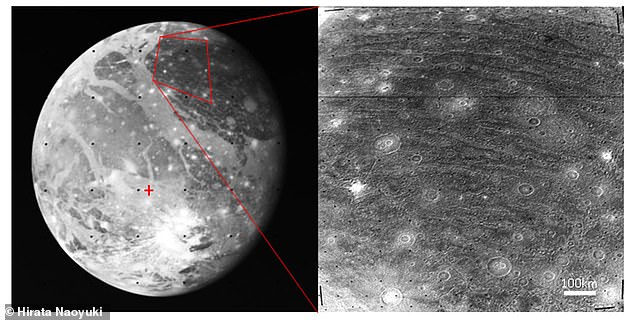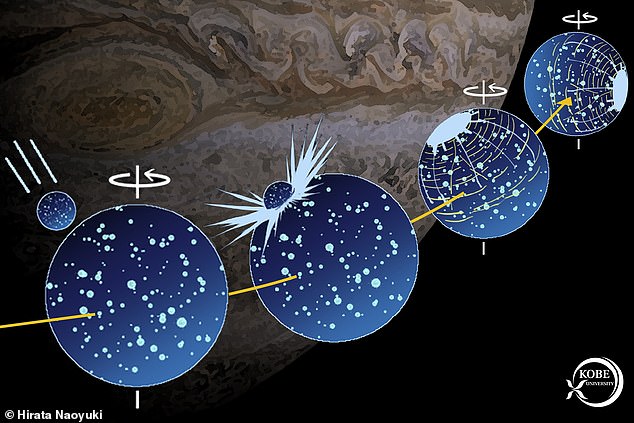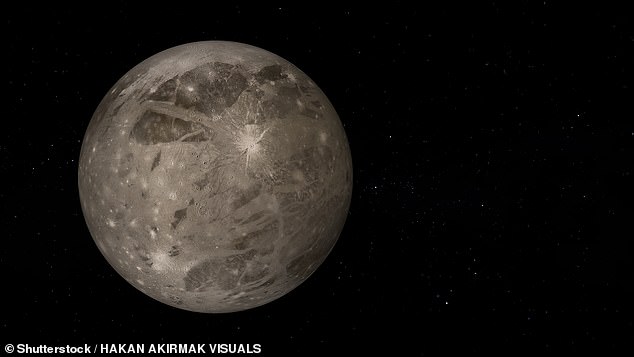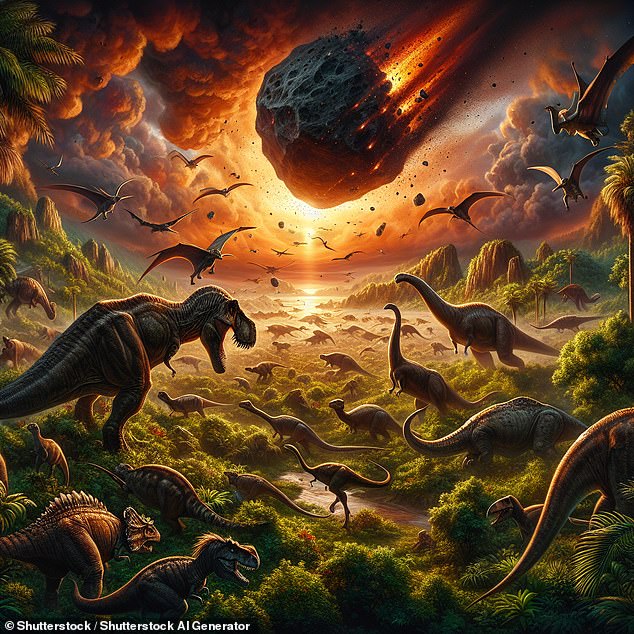Huge asteroid 20 TIMES larger than the one that wiped out the dinosaurs slammed into the Solar System’s biggest moon 4 billion years ago – shifting its axis entirely, study finds
- The asteroid impact was so large that it completely shifted Ganymede’s axis
When we think of giant asteroids, we probably immediately think of the space rock that hit Earth 66 million years ago and put an end to the dinosaurs.
But this asteroid paled in comparison to another devastating rock that rocked our solar system four billion years ago.
Scientists have found evidence that an asteroid 20 times larger than the one that ended the age of dinosaurs has slammed into Jupiter’s moon Ganymede.
According to researchers from Kobe University, the impact was so large that it completely shifted Ganymede’s axis.
While many questions remain about the incident, researchers hope to finally get answers when the European Space Agency’s JUICE spacecraft visits Ganymede in 2034.
When it comes to giant asteroids, you might think of the space rock that slammed into Earth 66 million years ago and wiped out the dinosaurs. But that asteroid paled in comparison to another devastating rock that rocked our solar system four billion years ago (artist’s impression)

In the 1980s, researchers discovered large grooves that form concentric circles around a specific spot on Ganymede’s surface
With a radius of 2,630 kilometers, Ganymede is the largest moon in the solar system.
Like our own Moon, the Moon is tidally locked, meaning it always points the same side toward Jupiter.
In the 1980s, researchers discovered large grooves that form concentric circles around a specific spot on Ganymede’s surface.
“Jupiter’s moons Io, Europa, Ganymede and Callisto all have interesting individual features, but what caught my attention were the grooves on Ganymede,” said Hirata Naoyuki, lead author of the study.
‘We know this feature was created by an asteroid impact about 4 billion years ago, but we weren’t sure how big the impact was and what its effect on the moon was.’

The asteroid impact was so large that it completely shifted Ganymede’s axis, according to researchers from Kobe University (artist’s impression)

Ganymede is currently largely unexplored, meaning data from the massive moon is scarce
Ganymede is still largely undiscovered, meaning little data is available from the moon.
So the researchers turned their attention instead to the dwarf planet Pluto.
Previous studies using data from the New Horizons spacecraft have shown that Pluto also suffered an impact that shifted its spin axis.
And based on the location of the grooves on Ganymede – on the meridian farthest from Jupiter – the researchers indicate that the moon was also reoriented by the collision with the asteroid.

When it comes to giant asteroids, you might immediately think of the space rock that hit Earth 66 million years ago and wiped out the dinosaurs (artist’s impression)
In their new study, the researchers reveal that the asteroid was likely about 300 kilometers in diameter and created a huge crater 1,400 to 1,600 kilometers in diameter.
“I want to understand the origin and evolution of Ganymede and other moons of Jupiter,” Hirata added.
‘The huge impact must have had a major impact on the early evolution of Ganymede, but the thermal and structural effects of the impact on Ganymede’s interior have not been studied at all.
‘I believe that further research into the internal evolution of icy moons can be done in the future.’
